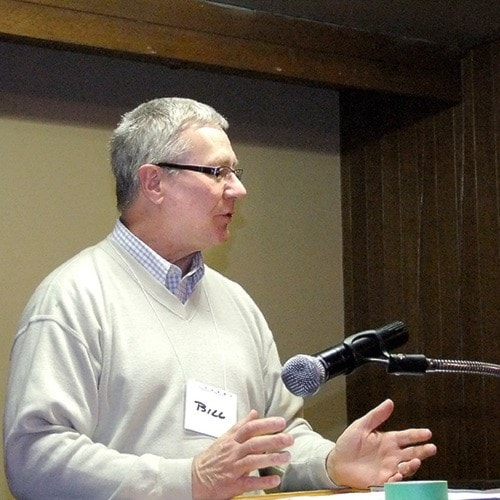Clearwater is taking a lead role in developing the Healthy Forests – Healthy Communities initiative, according to Bill Bourgeois, the initiative’s coordinator.
“I’d like to say the attendance today was phenomenal. I think the only other places where we’ve had this kind of attendance has been universities,” he said after a Healthy Forests – Healthy Communities forum held last Saturday in the Wells Gray Inn. More than 60 people attended, slightly more than took part in an initial forum in November, 2011.
“We like what we’re hearing from Clearwater,” Bourgeois added. “You’re providing leadership, community engagement and local government engagement. Actions are being taken, for example, with the creation of the forest advisory group. These are all key pieces.”
He felt the presence of Wells Gray Park was a great asset for the community.
“I think we have to capitalize on that as part of the diversification of the economy,” Bourgeois said.
His only disappointment following the meeting was the lack of participation by any of the major forest companies. However, he expected they will get involved eventually.
According to its website, Healthy Forests – Healthy Communities is a non-partisan, volunteer-supported initiative intended to capture the concerns and recommendations of experts and community members (including practicing forestry and biology professionals, Aboriginals and non-Aboriginals) to enable informed decision-making for forest lands management in British Columbia.
Last Saturday’s meeting was one of a series of dialog sessions being held in about 20 communities across the province to develop, along with input from experts, a vision for B.C.’s forests.
So far about 30 papers from experts have been incorporated into the draft vision, said Bourgeois.
A provincial election is coming up in May, the Healthy Forests – Healthy Communities coordinator noted. It is important that the candidates be educated about forest issues and that they be asked to state their positions on those issues.
“Hopefully, we can become a catalyst for change in B.C.’s forests,” he said.
Six issues or concerns were identified during the community dialog session held one year ago in Clearwater.
These were 1. the need for more sustainable employment; 2. forest tenure; 3. government jobs going to Kamloops; 4. the need for more local influence; 5. the need for a forest vision for the North Thompson; and 6. more education and training for the forest workforce.
Last Saturday’s session was intended to explore ways to act on those six concerns.
The session participants broke up into groups and discussed each of the six in rotation.
The outcomes of the group discussions were presented by group moderators to the whole meeting. These will be summarized by organizers and forwarded to Healthy Forests-Healthy Communities for incorporation into the draft vision for B.C. forests.
